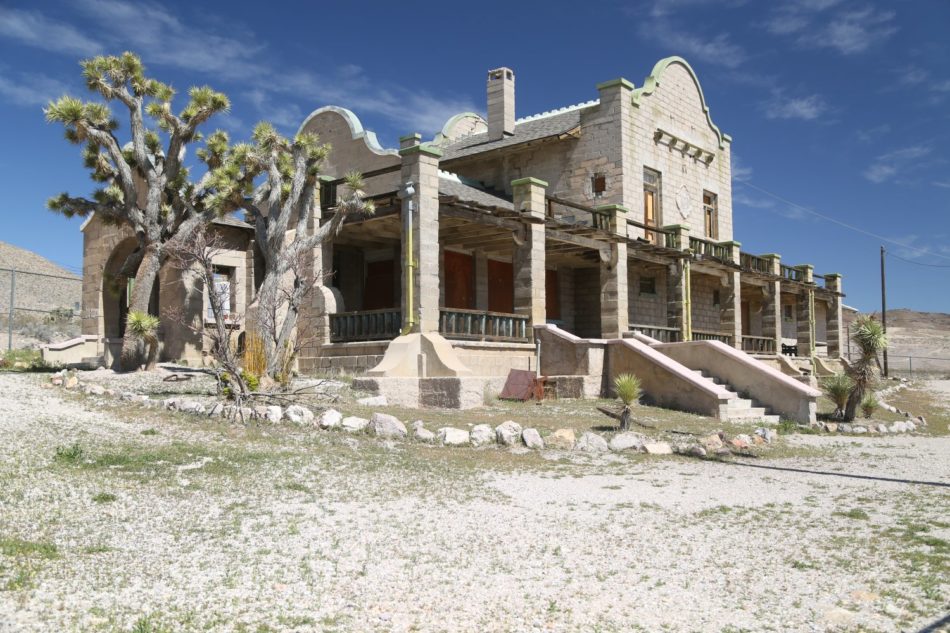This former mining, now ghost town was founded in 1905 with the discovery of gold in quartz by several miners. Its development was as quick as its bust. Its heyday only lasted for about 5 short years before the mines began to be tapped out and residents moved elsewhere. During its peak this was a formidable community of over 7,000 people with several railroad spurs going to town, some 50 saloons, nearly 20 hotels, numerous restaurants, the Rhyolite Stock Exchange and even a town newspaper, the Rhyolite Herald. Charles M. Schwab purchased the Bullfrog Mining District in 1906 – after his purchase the town was one of the most advanced in the region.
Old photographs show numerous buildings – today only a few buildings remain. When the town began to close, many of these buildings were scrapped for materials or moved to other mining towns. Two of the most prominent buildings included the Cook Bank Building (part of its crumbling walls are all the remain) and the still standing, Rhyolite Train Station Depot – the only sizable building still remaining, mostly intact.
One of the most intriguing buildings in town is the Tom Kelly Bottle House – named after its founder. Built with some 50,000 era bottles in 1906, the house was restored in 1926 for the Paramount Pictures film, The Air Mail. Completely fenced off, visitors can only walk around the exterior to see the outside of the house.
And not to be missed when visiting Rhyolite is the neighboring Goldwell Open Air Museum – began in 1984 it now houses a small collection of eclectic and prominent outdoor pieces of art. Some of the most memorable works are The Last Supper, which was created by wrapping live models in wet plaster, The Lady Desert and The Tribute to Shorty Harris.
Located within a short drive of the eastern border of Death Valley National Park and only a few miles from the closest town – Beatty. One main dirt road leads through what used to be the center of town with small dirt side roads leading off into the desert. Admission is free.

















Leave a Reply